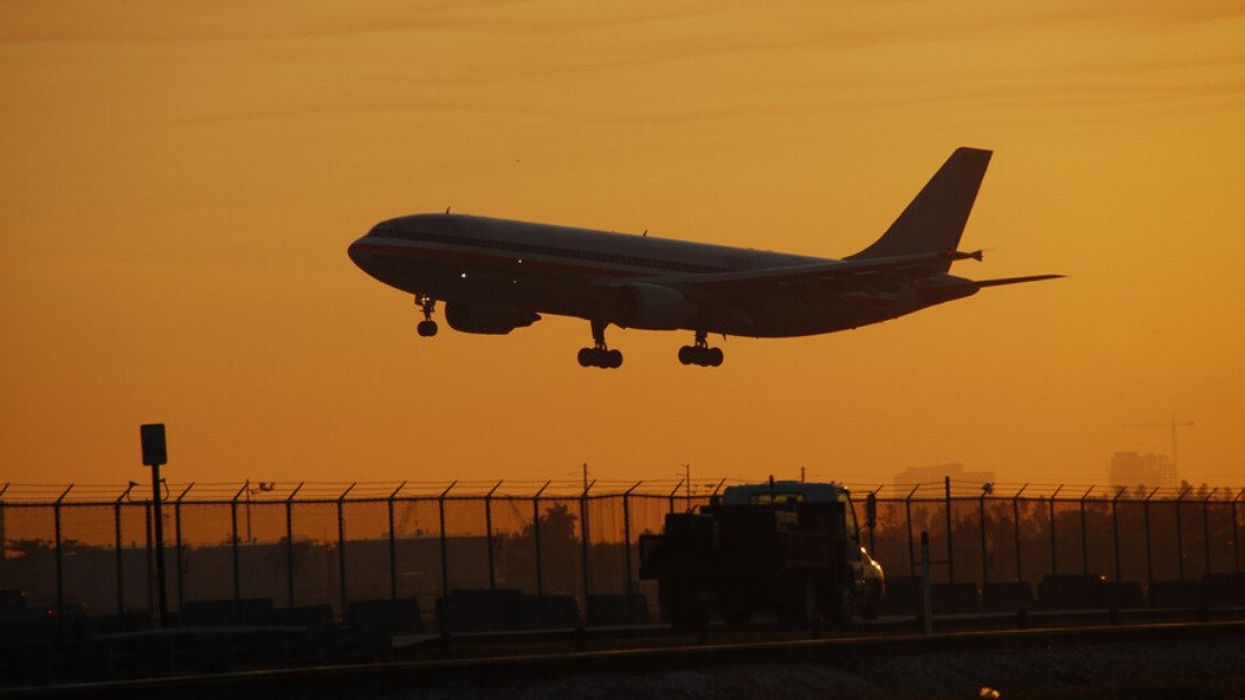A New Map Tells Travellers Which Countries To Avoid In 2024
It ranks country safety and predicts the year's top travel risks.

A plane landing at dusk.
Gone are the days when a simple map and a guidebook sufficed for globe-trotting. In an age where unexpected international challenges loom — from pandemic threats to armed upheavals — travellers now have a new resource at their fingertips. The 2024 Risk Map, released by International SOS, charts global safety and stability, offering insights beyond traditional concerns of culture and convenience, going so far as to predict major travel risks.
The latest edition incorporates data on medical and security risks worldwide, influenced by conflicts in Ukraine, Israel, and Palestinian territories.
A new addition to this year's Risk Map is the climate change risk layer. Data, compiled by the collaboration between the Euro-Mediterranean Center on Climate Change and the Joint Research Centre of the European Commission, offers quantified estimates of how climate change could heighten the risk of humanitarian crises and disasters.
Hotspots and health concerns
According to International SOS, the company saw an 80% increase in medical alerts related to climate change from 2022 to 2023, emphasizing the growing impact of climate factors on global health.
Dr. Irene Lai, the Global Medical Director at International SOS, highlights the seriousness of extreme heat events, like the "Cerberus" heatwave in Europe, and their potential to become more common.
The map also reflects changes in medical risks across different regions. Bolivia and Côte d'Ivoire have shown improvements in medical risk due to better access to quality medical care in major cities.
The medical risk ratings in the map consider a range of factors including infectious diseases, healthcare access, environmental factors, and security risks. These ratings vary widely, with major cities often having better healthcare access compared to remote areas.
The world's risk roulette
On the other hand, geopolitical tensions continue to shape global security, with areas like the Sahel, parts of the Middle East, and Ukraine categorized as "high" or "extreme" security risks. Increasing conflicts in regions such as Lebanon, the Palestinian Territories, Russia, and the Sahel, as well as rising criminality and unrest in Ecuador and parts of Colombia, have heightened security risks.
Conversely, some regions like El Salvador and parts of Nepal have seen decreased risk ratings due to sustained improvements in various factors.
The security risk ratings evaluate threats from political violence, social unrest, crime, and other factors like infrastructure robustness and natural disaster susceptibility. These ratings range from "insignificant" to "extreme," offering a detailed view of the security environment.
Global safety scale
Iceland leads the pack as the safest place in the world to visit, renowned for its remarkably low crime rates, political stability, and the safety it offers to international visitors.
Close on Iceland's heels is Luxembourg, a country where travelers face minimal security concerns. Rounding out the top five are Norway, Switzerland, and Denmark, all acclaimed for their stable societies and political systems, making them prime destinations for those seeking a secure travel experience.
Joining this prestigious group with very low-security risks are Slovenia, Finland, and Greenland. These destinations are known for their calm environments and effective safety strategies, appealing to travelers in search of peace and safety.
On the opposite end of the spectrum, International SOS points to South Sudan as the most hazardous destination due to its ongoing internal conflicts. Other high-risk countries include Afghanistan, Syria, Libya, and Somalia, primarily troubled by political instability and security challenges.
When it comes to facing minimal climate risks, Scandinavian countries – notably Iceland, Norway, Sweden, Finland, and Denmark – along with Kazakhstan, the UAE, and New Zealand, stand out. Their favorable geographic positions and forward-thinking environmental approaches play a significant role in this ranking.
Conversely, several central African nations, like Mali, Chad, Ethiopia, and Mozambique, are identified as facing severe climate risks. These areas are especially prone to the negative effects of climate change, such as harsh weather patterns and related challenges. Beyond Africa, the Philippines, Papua New Guinea, and India are also noted for their vulnerability to climate change impacts.
Globetrotting in 2024
The new Risk Map is a reminder that in today's interconnected world, being well-informed is just as important as being well-packed. Whether you're off to a business meeting in Luxembourg or a hike in the Norwegian fjords, the map ensures you're travelling smart and safe. In 2024, it's not just about where you go, but also knowing what awaits you there.
- The Top Travel Destinations Of 2024 Were Ranked & Quebec Made The Cut ›
- 9 At-Risk Places You Should Not Visit In 2024, Travel Experts Say ›
- Canada Has Issued Travel Advisories For These 7 Tourist Destinations ›
- The Safest Countries To Visit In 2024 Were Ranked & Canada Came Out On Top - MTL Blog ›
- The Safest Airlines Of 2024 Were Ranked — Here's How Canadian Carriers Stack Up - MTL Blog ›
- Canada Has Issued Travel Advisories For These 9 Countries - MTL Blog ›

